20 Ducks with Pointed Beaks
Many people overlook just how much a duck’s beak shape contributes to its beauty and character.
The shape of a beak can completely change a duck’s silhouette — and even reveal what kind of food it eats. Some are perfectly designed for dabbling in shallow water, while others are built for catching insects or grazing on plants. And let’s be honest — some beak shapes are simply adorable!
When most of us think of duck beaks, we picture the typical broad, flat shape — the classic “if it looks like a duck, it must be a duck” kind. But did you know that some ducks actually have long, slender, and even pointed beaks?
Today, I’m highlighting a few of those species. While not all of them have dramatically pointed bills, each one stands out for having a slimmer or more tapered shape than the usual wedge-like beak we associate with ducks. Hopefully, this list will inspire you to take a closer look at the beaks of the ducks around you — you might start noticing fascinating details you’ve never seen before. Enjoy!
1. Common Merganser
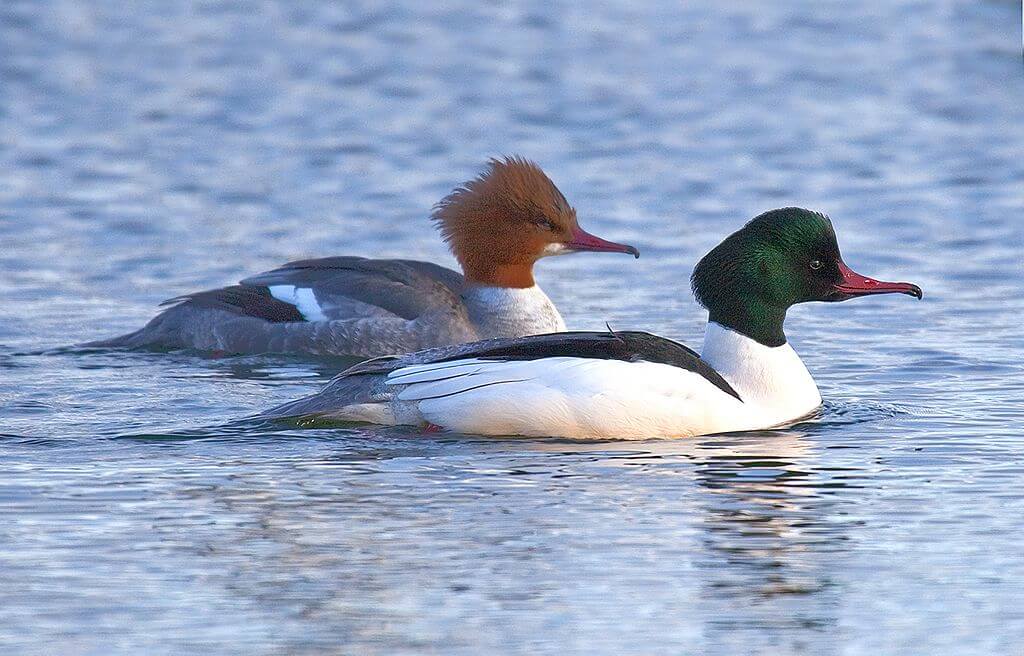
The Common Merganser is easy to recognize by its bright red, sharply pointed bill. That slender bill is lined with tiny serrations that work like a comb for catching fish in fast-moving streams and lakes. These ducks prefer clear, cold waters surrounded by forests, where they nest in tree cavities. In winter, they often move south to unfrozen rivers and large lakes.
2. Hooded Merganser
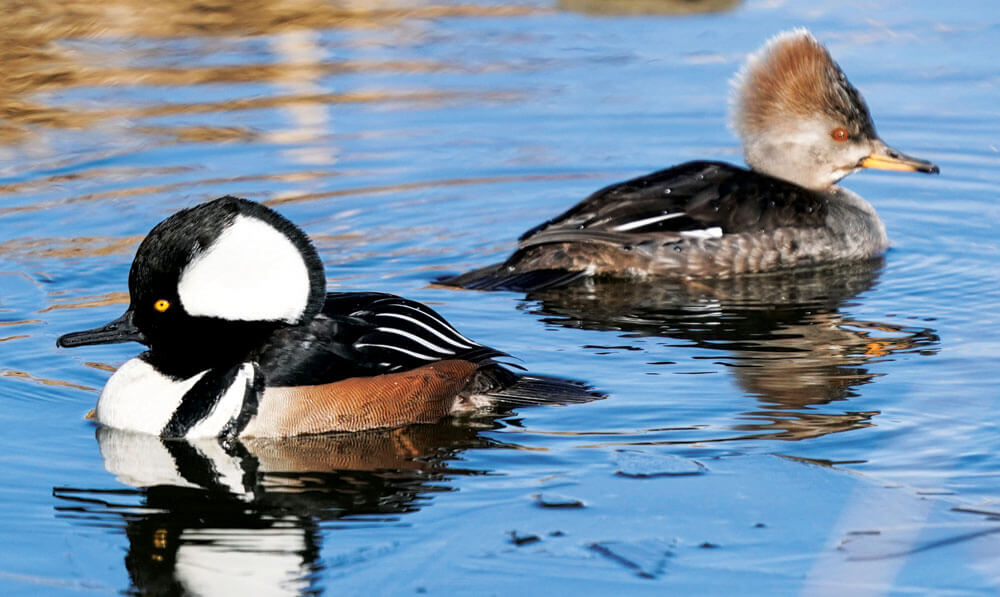
The Hooded Merganser looks like a little show-off, especially the male with his striking white fan-shaped crest. But its narrow, pointed bill tells a story of precision — perfect for grabbing aquatic insects, crustaceans, and tiny fish. Hooded Mergansers usually stick to wooded ponds and quiet wetlands rather than large open lakes. They’re short-distance migrants, so when cold weather sets in, they simply move to nearby unfrozen water.
3. Red-breasted Merganser

Built for speed and endurance, the Red-breasted Merganser may be one of the fastest flying ducks in the world. Its long, thin, orange bill helps it hunt fish in coastal waters and large northern lakes. These ducks breed across the far north in summer and spend winter along seacoasts where the water doesn’t freeze. Sadly, their habit of diving for fish near polluted or overfished areas sometimes puts them at risk, making clean, healthy waters crucial to their survival.
4. Brazilian Merganser

Now here’s a truly special bird: the Brazilian Merganser is one of the rarest ducks on Earth! It lives in a few remaining stretches of clear, fast-flowing rivers in Brazil and parts of Paraguay. Its long, sharply pointed bill is perfect for catching small fish and aquatic insects. Habitat loss and river pollution have made this species critically endangered, with only a few hundred individuals left in the wild. Conservation groups are working hard to protect its river homes and give this beautiful duck a fighting chance.
Discover other endangered duck species here: 17 Most Endangered Ducks in the World According To IUCN Red List
5. Scaly-sided Merganser

Native to eastern Russia, China, and Korea, the Scaly-sided Merganser is instantly recognizable by its patterned feathers that look like delicate fish scales — and of course, its slender, pointed orange bill. This striking bird breeds in forested mountain rivers and winters in milder lowland waters. Unfortunately, it’s considered globally endangered due to deforestation and human disturbance near nesting sites. Despite that, it remains a favorite among birdwatchers lucky enough to spot its elegant dive or hear its short, whistling call echo across a quiet river valley.
6. Northern Pintail
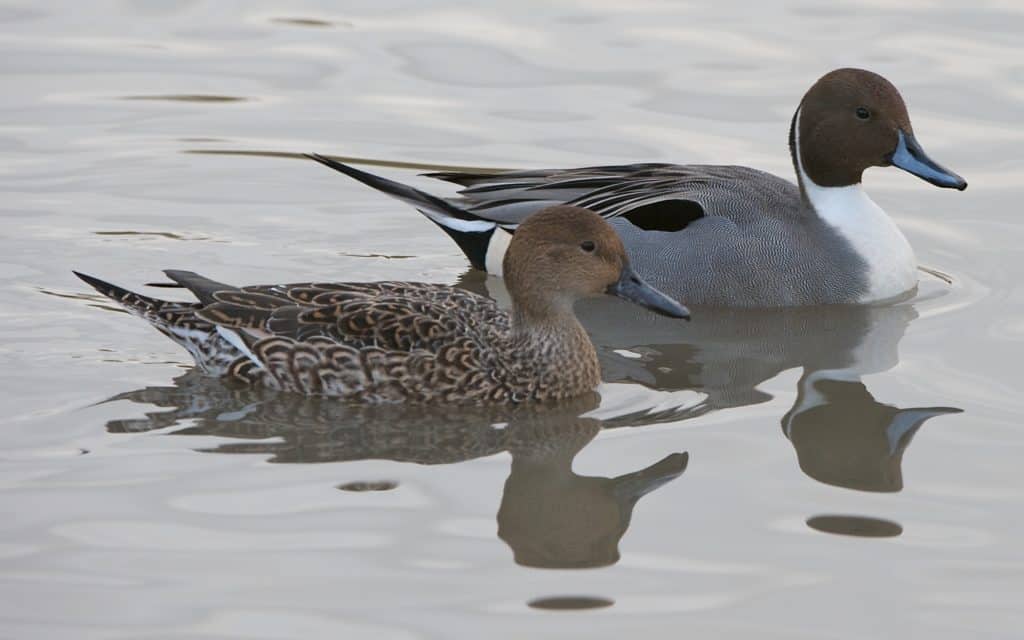
Graceful and elegant, the Northern Pintail is one of the most refined ducks you’ll ever see. Its long neck and slim, pointed bill give it a sleek profile, especially in flight. The bill’s narrow shape helps the pintail dabble delicately for seeds, aquatic plants, and small insects in shallow waters. Pintails are great travelers — they migrate thousands of miles between Arctic breeding grounds and warmer winter wetlands around the world. Sadly, their populations have dipped in recent decades because of habitat loss and drought affecting their nesting areas.
7. Red-crested Pochard
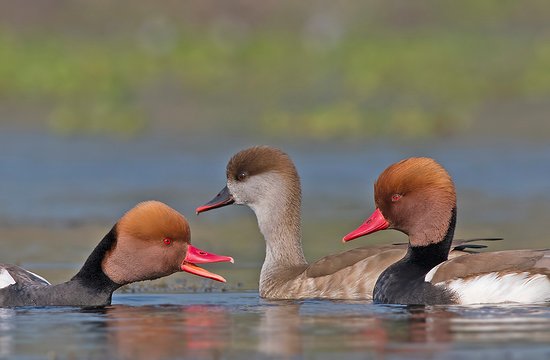
You’ll spot the Red-crested Pochard by its bright orange-red head (in males) and vivid red bill that’s gently pointed at the tip. That bill isn’t built for spearing fish but for nibbling on plants — these ducks love diving for roots and seeds underwater. They live mainly across Europe and Asia, and prefer calm lakes and slow rivers. In winter, they often gather in large flocks, creating a splash of color across the water.
8. Smew

The Smew is a small, striking duck — almost like a tiny panda on water! Its pointed, narrow bill sets it apart, perfectly designed for catching fish, much like the mergansers. This little duck breeds in northern Europe and Asia, nesting in tree holes near lakes and rivers, and migrates south when winter freezes over.
9. Torrent Duck
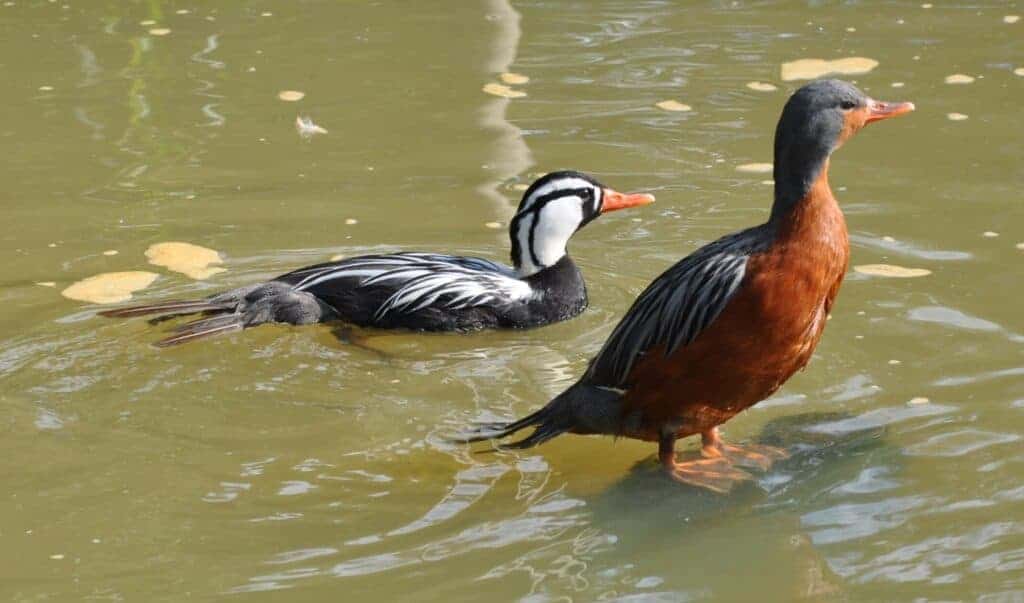
Meet the daredevil of the duck world! The Torrent Duck lives in the fast, rushing mountain rivers of South America. Its long, thin, and sharply pointed bill helps it cling to rocks and pluck insects, larvae, and small crustaceans from turbulent waters. It’s built for life in strong currents, with powerful legs and webbed feet that grip slippery stones. Torrent Ducks are loyal pairs, often seen together riding the rapids — a true symbol of love and teamwork in the wild.
10. Maned Duck

Also known as the Australian Wood Duck, the Maned Duck has a neat, slightly pointed bill that’s great for grazing on grass and plants. Unlike most ducks, it spends more time on land than in water, wandering open fields and parklands. The male’s dark “mane” of feathers gives this species its name. These ducks nest in tree hollows and are common sights near urban lakes in Australia.
11. Mandarin Duck
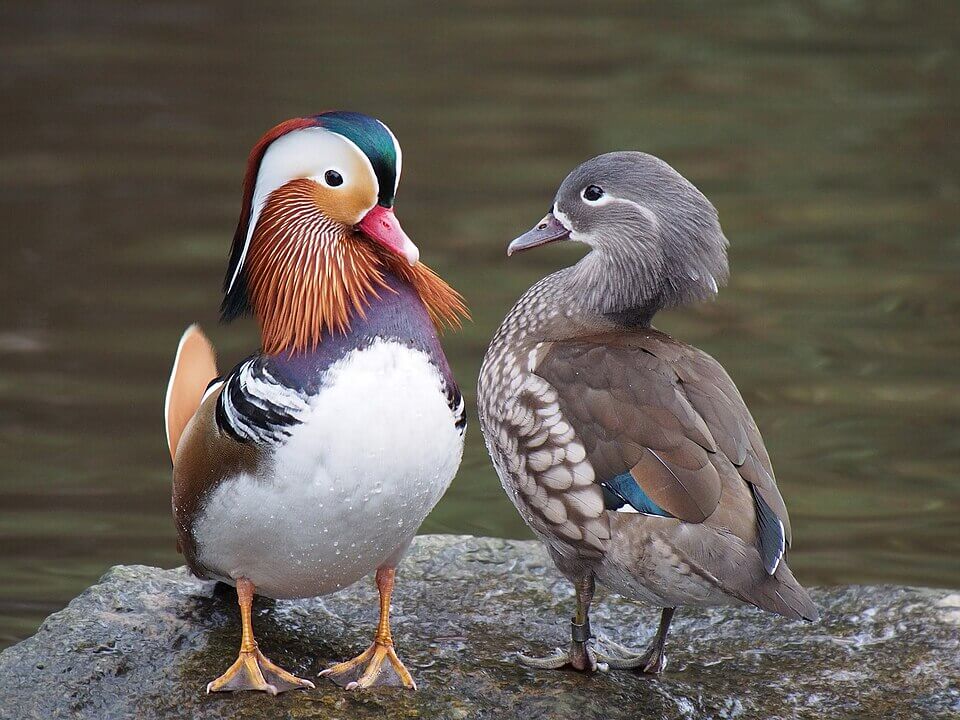
Few ducks can match the beauty of the Mandarin Duck. With its brilliant mix of orange, blue, and gold feathers, it looks almost too perfect to be real. Look closely and you’ll notice its bill — short, fine, and slightly pointed — suited for nibbling plants, seeds, and insects along wooded ponds and rivers. Native to East Asia, Mandarins nest in tree holes and are known for their strong pair bonds.
12. Common Teal (Eurasian Teal)

The Common Teal is Europe’s smallest dabbling duck, but don’t let its size fool you — it’s fast, lively, and graceful. Its bill is narrow and a bit pointed, helping it pick tiny seeds and insects from the water’s surface. These ducks prefer shallow wetlands, marshes, and flooded fields. In winter, they migrate south in large flocks, filling the skies with quick, twisting flights.
13. Spotted Whistling Duck
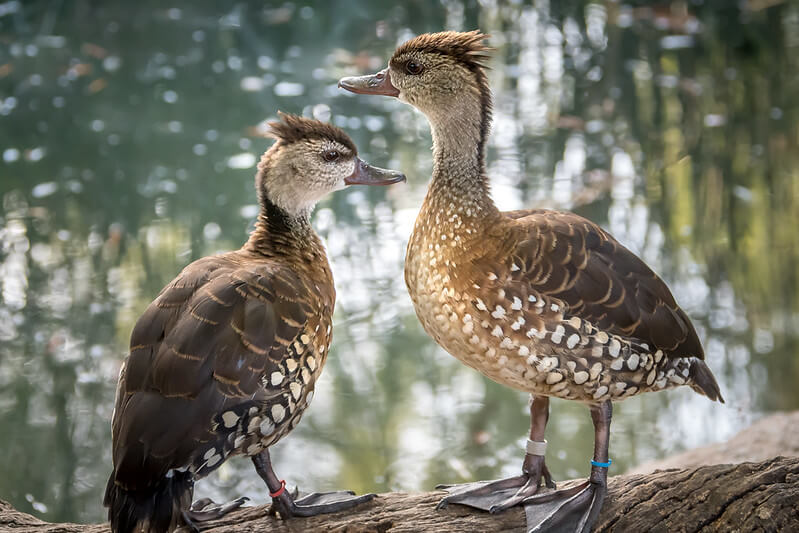
Named for the spotted feathers on its chest and its musical, whistling voice, the Spotted Whistling Duck is full of charm. Its bill is slim and slightly pointed, just right for grazing on grasses and feeding on seeds and aquatic plants. Found in tropical regions of Australia and New Guinea, these ducks often perch in trees — a rare sight for most ducks! Their loud, clear whistles can echo across wetlands, making them easy to recognize even before you see them.
14. Wood Duck
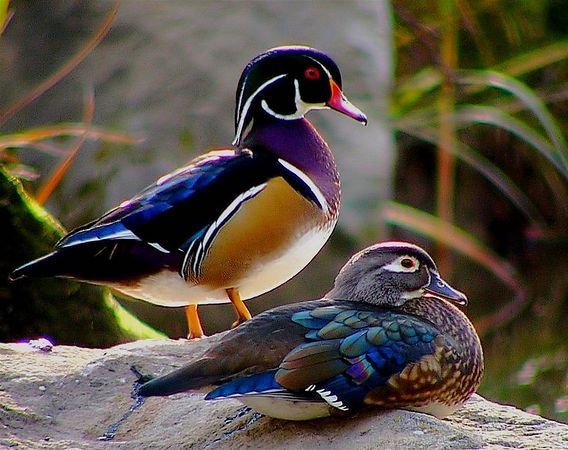
One of North America’s most beautiful waterfowl, the Wood Duck has a smooth, narrow bill that ends in a gentle point. This bill shape helps it feed on acorns, seeds, and insects both on land and in water. True to its name, the Wood Duck nests high in tree cavities near ponds and rivers. Males are dazzling with their green crests and red eyes, while females have a softer, elegant look.
15. Falcated Duck

The Falcated Duck, named for the long, curved feathers on the male’s back, is a graceful bird of East Asia. Its bill is slender and slightly pointed, helping it pick vegetation and small aquatic creatures from the water. These ducks breed in northeastern Asia and migrate south to Japan, China, and Southeast Asia for the winter.
16. Fulvous Whistling Duck
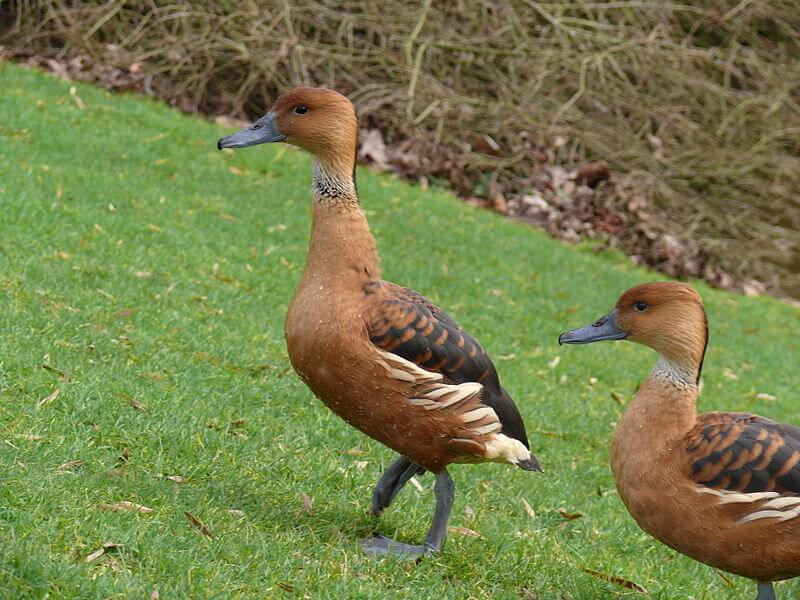
The Fulvous Whistling Duck is a tall, cinnamon-colored bird with long legs and a slightly pointed, bluish-gray bill. That bill helps it pluck seeds, rice grains, and aquatic plants from the water’s edge. Found in warm regions across the Americas, Africa, and Asia, it’s often seen in noisy flocks — and when they take off, their clear whistling calls fill the air. These ducks love open wetlands and rice fields, and their upright posture gives them a distinctive look among their whistling cousins.
17. Gadwall
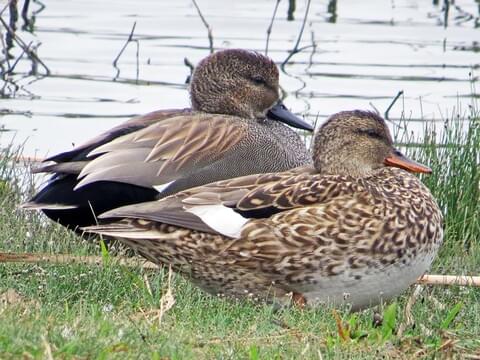
At first glance, the Gadwall may look plain compared to flashier ducks, but look closer and you’ll see its subtle beauty — a fine pattern of gray feathers and a trim, slightly pointed bill. That neat bill makes it an efficient grazer, clipping underwater plants with precision. Gadwalls are quiet, calm ducks often seen mixed with mallards in ponds and marshes across North America and Europe. They’re careful feeders, often diving or dabbling quietly beside the reeds instead of squabbling for food.
18. Ringed Teal
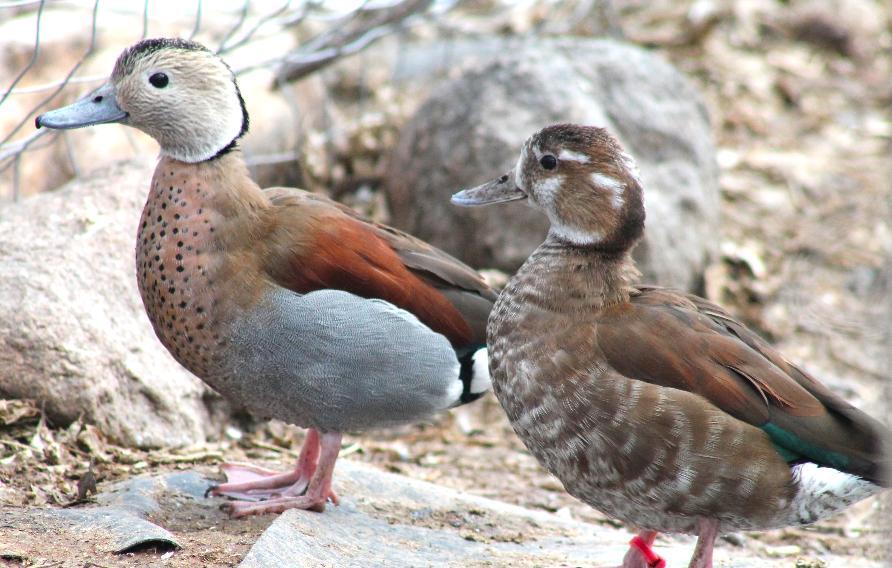
Small and delicate, the Ringed Teal of South America has a neat, tapered bill that’s just right for picking seeds and insects from shallow waters. Both males and females sport striking plumage — chestnut flanks and pale bellies. These ducks thrive both in trees and on water, often nesting in tree holes like wood ducks.
19. Sunda Teal
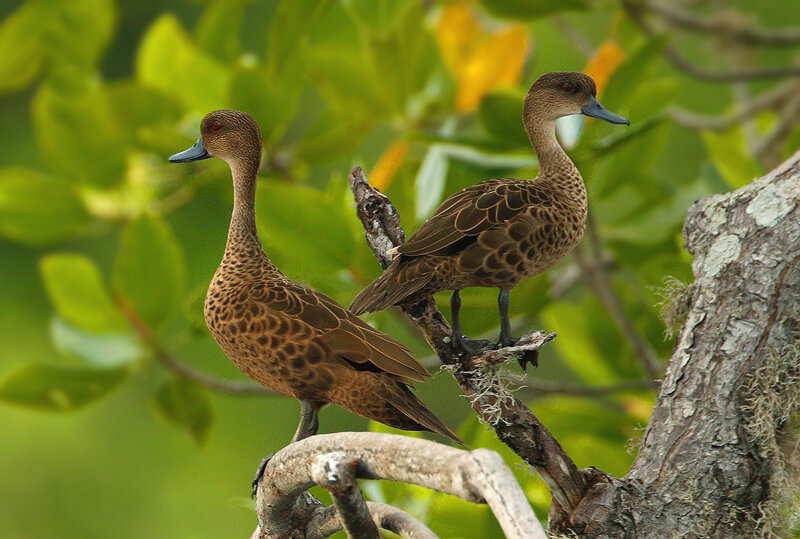
The Sunda Teal, found across Indonesia and nearby islands, has a smooth, slightly pointed bill that it uses to filter-feed on seeds, crustaceans, and tiny invertebrates. Its calm behavior and muted brown tones help it blend perfectly into mangroves and lagoons. These ducks are mostly sedentary, preferring to stay near their tropical wetlands year-round.
20. White-backed Duck

The White-backed Duck is a bit of a mystery — it looks like a diving duck but behaves more like a small grebe! Found in sub-Saharan Africa, it has a narrow, pointed bill perfect for eating aquatic plants and small invertebrates. The “white back” shows only when it stretches its wings. Shy and quiet, it’s a secretive bird that rewards patient watchers with glimpses of graceful dives and quick, darting movements.
